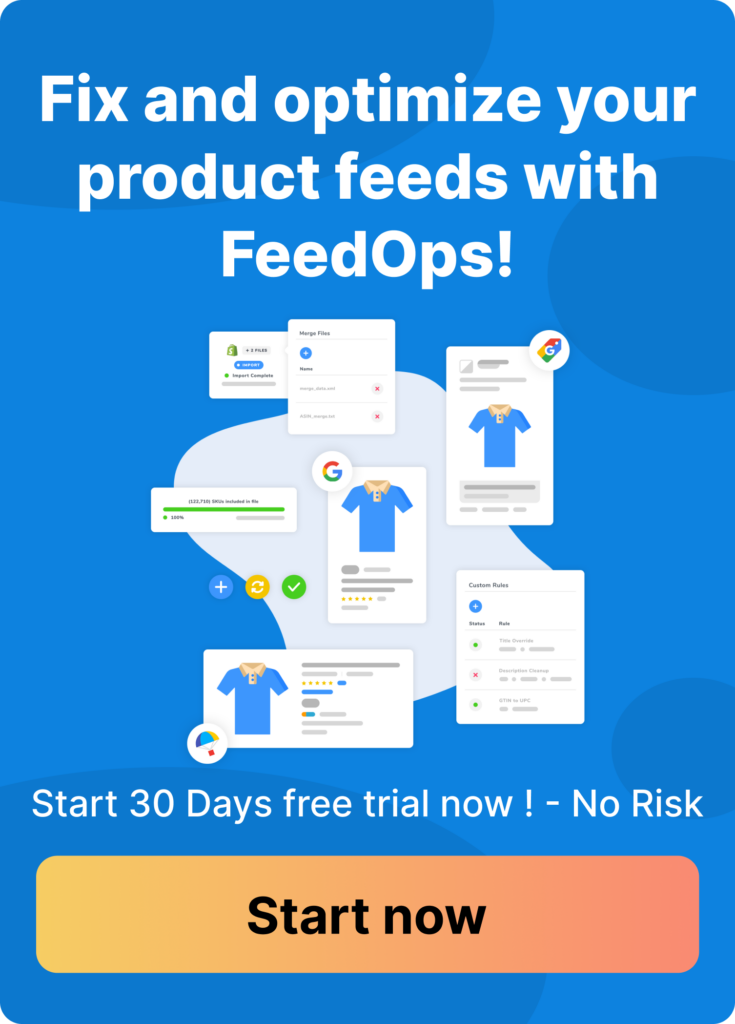Google PMax - A Paradigm Shift from Smart Shopping
Performance Max, or PMax, signifies a considerable shift in Google’s approach to e-commerce advertising. PMax amalgamates various ad formats. In contrast to the earlier approach, Smart Shopping combined the potency of Shopping Ads with Dynamic Remarketing, both recognized for their robust conversion rates. PMax extends this concept by incorporating Dynamic Search Ads and other upper-funnel activities designed to scale ad spend.
This blend leverages the high-converting potential of Shopping Ads and Dynamic Remarketing, typically closer to the point of purchase, with the broad reach of upper-funnel formats aimed at engaging potential customers earlier in their buying journey.
As a result, PMax presents a more comprehensive advertising solution, designed to touch on multiple stages of the customer journey, from initial product discovery to the final purchase decision. However, the real-world impact on retailers’ advertising strategies and performance may vary, which underscores the importance of understanding its workings for optimal utilization.
Google Shopping Ads: Capturing Profitable Purchase Intent
Google Shopping Ads form a crucial part of PMax, given their strategic positioning at the conversion end of the marketing funnel. They come into play when a user exhibits a strong purchase intent, often demonstrated through the use of specific, product-related keywords in their search.
These Shopping Ads display product images, descriptions, prices, and seller information directly within the search results, offering a quick comparison for users. This rich, immediate information combined with high visibility makes Shopping Ads particularly effective for engaging users who are in the decisive phase of their buying journey and ready to commit to a purchase.
For instance, consider a user searching for “women’s red running shoes size 8”. The specificity of this search query indicates that the user knows exactly what they want and is likely poised to purchase. In such scenarios, Google Shopping Ads can yield the best returns on ad spend. The ads provide users with a range of options matching their search criteria directly on the search results page.
With an image, price, and direct link to the product, these ads supply all the required information for a user to make a purchase decision, without the need to click through to a product page. This convenience, along with the ability to compare offerings swiftly, makes Google Shopping Ads an effective, profitable tool for converting users with high purchase intent.
However, the effectiveness of Shopping Ads doesn’t solely hinge on their placement or format – it’s also heavily dependent on the quality of the product data provided by the retailer. Accurate, detailed product data can ensure that the most relevant products are displayed to the right users at the right time, enhancing the chances of conversion and profitability.
Within the PMax framework, comprehending the role and potential of Shopping Ads is crucial. Being at the sharp end of the conversion funnel, these ads can be a powerful driving force for sales. To unlock their full potential and achieve profitable returns on ad spend, advertisers must focus on supplying high-quality product data and optimizing their listings for the most relevant keywords.
Dynamic Remarketing: An Advertiser's Secret Weapon
Dynamic Remarketing, while not strictly an ad format, is indeed a potent advertising tactic – an artful strategy that re-engages website visitors who have demonstrated interest in a product but haven’t completed a purchase. This is achieved through Dynamic Remarketing Ads – product-centric ads that contain vital elements such as the product title, image, price, and other details derived directly from your product feed.
Dynamic Remarketing Ads are designed to capture attention and rekindle interest in products that users have previously interacted with on your website. They are displayed across Google’s vast ad network as users browse other websites, watch YouTube videos, check their Gmail, or use mobile apps. The primary goal of Dynamic Remarketing Ads is to bring users back to your website to complete a purchase they left unfinished. By showing users ads that contain the very products they have shown interest in, Dynamic Remarketing Ads create a personalized advertising experience that feels more relevant and less intrusive.
This wide-reaching and customized approach increases the likelihood of re-engaging users who have already shown interest in your products. Consequently, Dynamic Remarketing Ads can be a highly effective tool in your digital marketing arsenal, maximizing the return on ad spend by focusing on users who are already familiar with your brand and products.
Within the framework of PMax, although there’s no explicit setting for Dynamic Remarketing, it’s a default feature inherited from its predecessor, Smart Shopping. When utilized correctly, this feature can notably enhance conversion rates by targeting users who are already halfway down the conversion funnel and might just need that extra nudge to make a purchase.
However, the successful implementation of Dynamic Remarketing goes beyond merely enabling a feature. It calls for the creation of visitor lists and product tagging. Hence, Dynamic Remarketing can be perceived as a blend of ad format and advertising strategy, making it an essential element of any successful PMax campaign.
Dynamic Search Ads: Auto-Generated Ads for High Relevance
Dynamic Search Ads (DSAs) are a unique and significant part of the PMax blend. They are automatically generated based on the content of your website or page feed, which makes them an excellent tool for promoting a wide range of products without having to create individual ads for each one.
DSAs work by using Google’s web crawling technology to index your website or the URLs in your page feed. When a user’s search query is highly relevant to one of your products or pages, Google automatically generates an ad with a headline and landing page tailored to the search term. For example, if you sell athletic shoes and a user searches for “running shoes for women,” Google might generate an ad with the headline “Women’s Running Shoes” that directs the user to the women’s running shoes section of your website.
One of the major benefits of DSAs is their ability to fill in the gaps in your keyword-based campaigns. They can capture relevant searches that you might not have anticipated, thereby expanding your reach to potential customers. DSAs are also useful for keeping your ads up to date with changes in your inventory. If you add a new product to your website, DSAs can start promoting it as soon as it’s available.
However, it’s important to note that DSAs require optimization for best results. This includes providing a comprehensive and well-structured page feed and ensuring that your website is easily crawlable by Google. Regularly reviewing the search terms that trigger your DSAs to exclude irrelevant ones is also crucial.
A key point to be aware of is that DSAs will not compete with your keyword-targeted search ads. Any keywords explicitly targeted in your search campaigns will be excluded from your DSA campaigns within PMax. This means that if you wish to exclude certain keywords, such as your brand terms, from your DSAs, you need to include them in your search campaigns. Otherwise, you may find these excluded keywords popping up in your DSAs.
In terms of user intent, DSAs align well with lower-funnel activities. They target users who are actively searching for products like yours, signaling a high level of purchase intent. Consequently, DSAs often deliver strong returns on ad spend, making them a key part of the PMax mix.
As with other components of PMax, DSAs underscore the importance of strong data feeds and optimization. The more accurate and detailed your page feed is, the better Google can match your pages to relevant search queries and generate compelling ads. This, in turn, can lead to higher click-through rates, more conversions, and ultimately, a more profitable PMax campaign.



